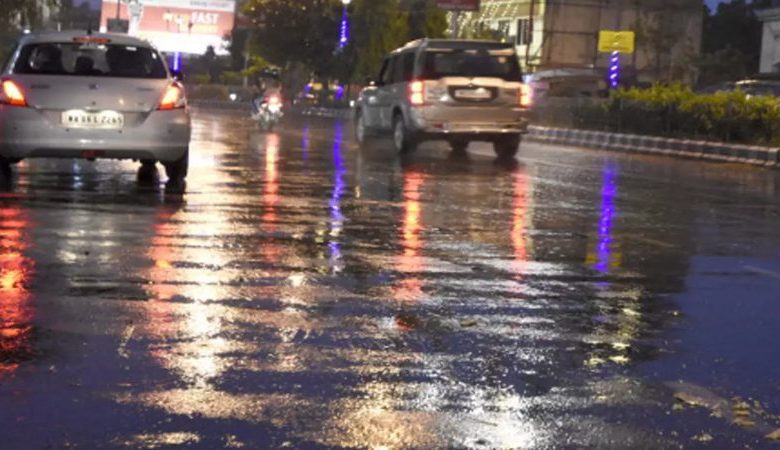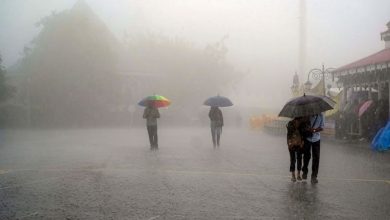Vidarbha Reports 15% Surplus Rains This Year, Nagpur District Receives 8% More Rainfall

Nagpur district: The Vidarbha region experienced an unusual surge in rainfall this monsoon season, marking a 15% surplus compared to the region’s average. Nagpur, one of its prominent districts, saw an 8% increase in rainfall, recording 1056.1 mm of rain between June and September. This significant weather event has brought both relief and challenges to the area, from fertile fields to unexpected floods. But what does this all mean for Vidarbha? Let’s dive into the details.
Overview of Vidarbha’s Monsoon Surplus
The monsoon season, which officially lasts from June to September, ended on a high note for Vidarbha. This year, the region received 1065 mm of rainfall, exceeding the average by 15%. What makes this even more notable is the consistency of rainfall throughout the season. Vidarbha typically experiences variable rains, but this year brought steady and, at times, heavy downpours.
Nagpur’s Rainfall Statistics – 8% Above Average
Nagpur, a central hub (Nagpur district) in Vidarbha, played a significant part in the region’s surplus. With 1056.1 mm of rain, Nagpur saw 8% more rainfall than the average of 974-1000 mm. While this has been beneficial for agriculture and water reserves, the increased rainfall also led to challenges like flooding, especially in rural areas. The impact was felt across the city as well, with waterlogging in several urban zones.
A Monsoon Unlike Last Year’s Extreme Weather
Although Vidarbha saw heavy rainfall, this year’s monsoon didn’t follow the same devastating pattern as last year. The rains were more spread out, helping avoid the extreme floods that affected the region in 2023. However, flooding did occur, particularly in the districts of Bhandara, Chandrapur, Gadchiroli, and Gondia. Villages were cut off due to rising waters, but the damage wasn’t as widespread as feared.
Impact on Agriculture
The surplus rains have been a mixed blessing for Vidarbha’s agriculture. While many farmers benefited from the plentiful water supply, the flooding in some districts damaged crops and delayed planting. The challenge now lies in salvaging these fields before winter sets in.
September and October – A Transition in Weather Patterns (Nagpur district)
While September typically experiences less rainfall, this year saw persistent rains that extended into early October. The Indian Meteorological Department (IMD) hasn’t issued any rainfall warnings until October 5, suggesting a gradual retreat of the monsoon. But the lingering showers have led to a delay in the withdrawal of the southwest monsoon from Maharashtra.
Expected Withdrawal of Monsoon
Monsoon is expected to withdraw from Vidarbha by mid-October. The IMD forecasts that the last monsoon cycle will take place between October 9 and 13. Once the rains end, the region will begin transitioning into cooler, drier months.
Cyclonic Disturbances and Their Potential Influence
Although the monsoon season is nearing its end, Nagpur(Nagpur district) may still experience heavy rainfall due to cyclonic disturbances from the Bay of Bengal. These disturbances typically cross the Andhra coast and move towards Maharashtra, bringing late-season rains. While these events are rare, they can lead to short bursts of heavy rain in October.
Weather Statistics for Nagpur in October
October marks a significant shift in Vidarbha’s weather, with temperatures and humidity dropping as the monsoon withdraws. Nagpur, in particular, sees a stark contrast between daytime and nighttime temperatures.
Temperature Trends
- Mean Maximum Temperature: 33.2°C
- Mean Minimum Temperature: 20.2°C
As the days grow warmer and drier, nights become cooler, with a noticeable drop in temperature compared to September.
Rainfall Patterns in October
Though the monsoon is on its way out, Nagpur can still expect occasional rains. On average, the city receives 53.3 mm of rainfall in October, spread across 2.9 rainy days. Most of these showers are associated with thunderstorms, which occur about 2.5 days in the month.
Relative Humidity Levels
The relative humidity in October ranges from 74% in the mornings to 63% by the evening. This gradual decrease in humidity signals the approach of winter, which typically sets in after mid-October.
Looking Ahead – The Onset of Winter
After October 15, Vidarbha will begin to see cooler and more comfortable weather. The southwest monsoon will have completely withdrawn, and winter will start making its presence felt. The drier months ahead will bring much-needed relief to the flood-hit areas, giving farmers time to recover and prepare for the next growing season.
The Benefits of Post-Monsoon Rains
Late-season showers, while disruptive at times, also play a crucial role in replenishing groundwater levels. They help sustain crops that rely on residual moisture and reduce the immediate impact of water shortages during the dry months.
Preparing for Winter Crops
Farmers in Vidarbha can now begin focusing on winter crops like wheat, chickpeas, and lentils. The surplus rains have ensured that there will be ample moisture in the soil, setting the stage for a productive winter harvest.
Vidarbha’s 15% surplus in rainfall this year has brought both relief and challenges. While the extra water has boosted agricultural productivity and filled reservoirs, it has also caused flooding in several districts. As the region transitions from monsoon to winter, it faces the task of managing the aftermath of the rains while preparing for the cooler months ahead. With the monsoon expected to withdraw by mid-October, Vidarbha will soon enter a period of drier weather, providing a respite from the heavy rains.
- Why did Vidarbha experience a 15% rainfall surplus this year?
The region benefited from consistent monsoon rains, which were stronger and more prolonged than usual. - How did the extra rainfall affect Nagpur?
Nagpur saw an 8% increase in rainfall, leading to both benefits for agriculture and challenges like urban flooding. - Will there be more rains in October?
While the monsoon is retreating, there’s still a possibility of scattered showers and thunderstorms in early October. - When will winter start in Vidarbha?
Winter typically begins after October 15, once the monsoon has fully withdrawn from the region. - What crops are farmers planting after the monsoon?
With the surplus rains, farmers are now preparing to plant winter crops such as wheat, chickpeas, and lentils.









